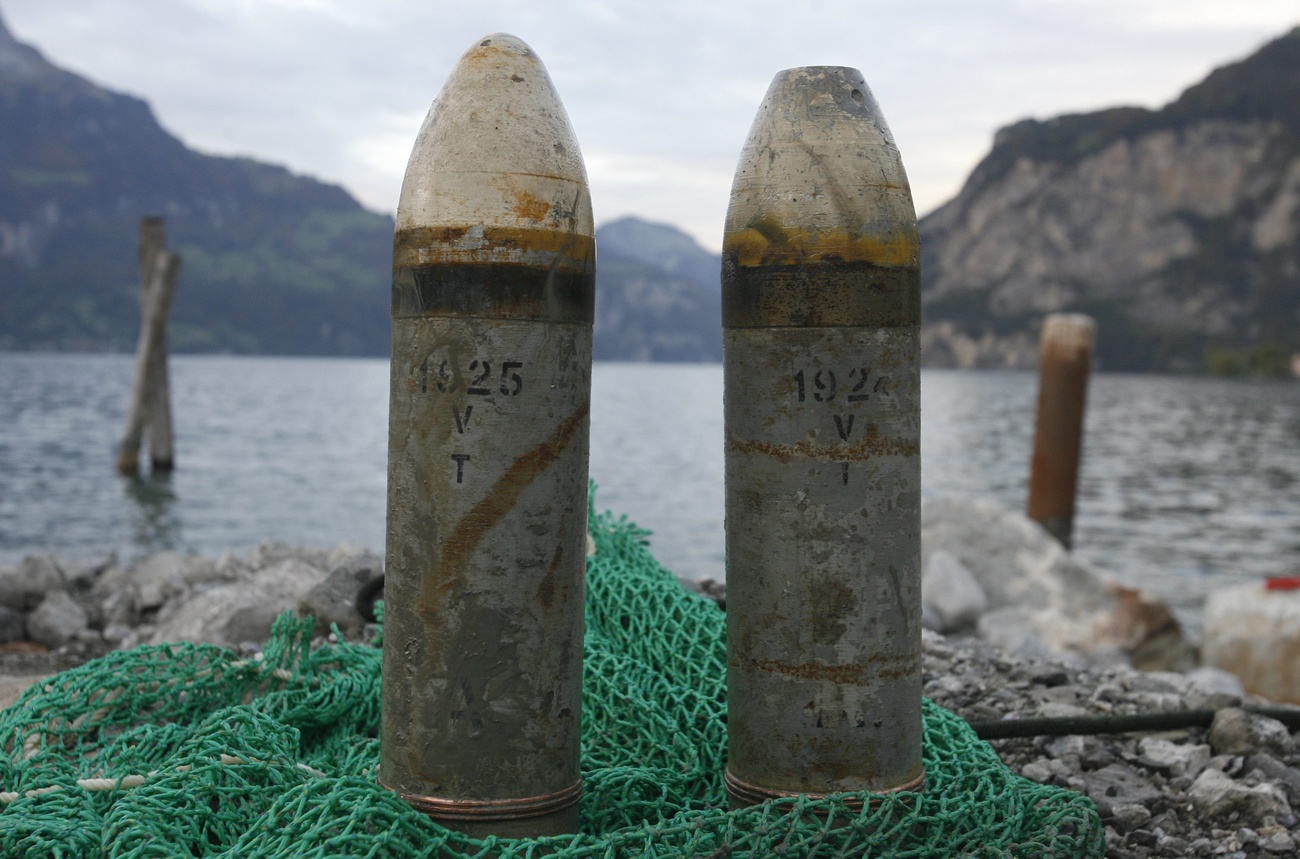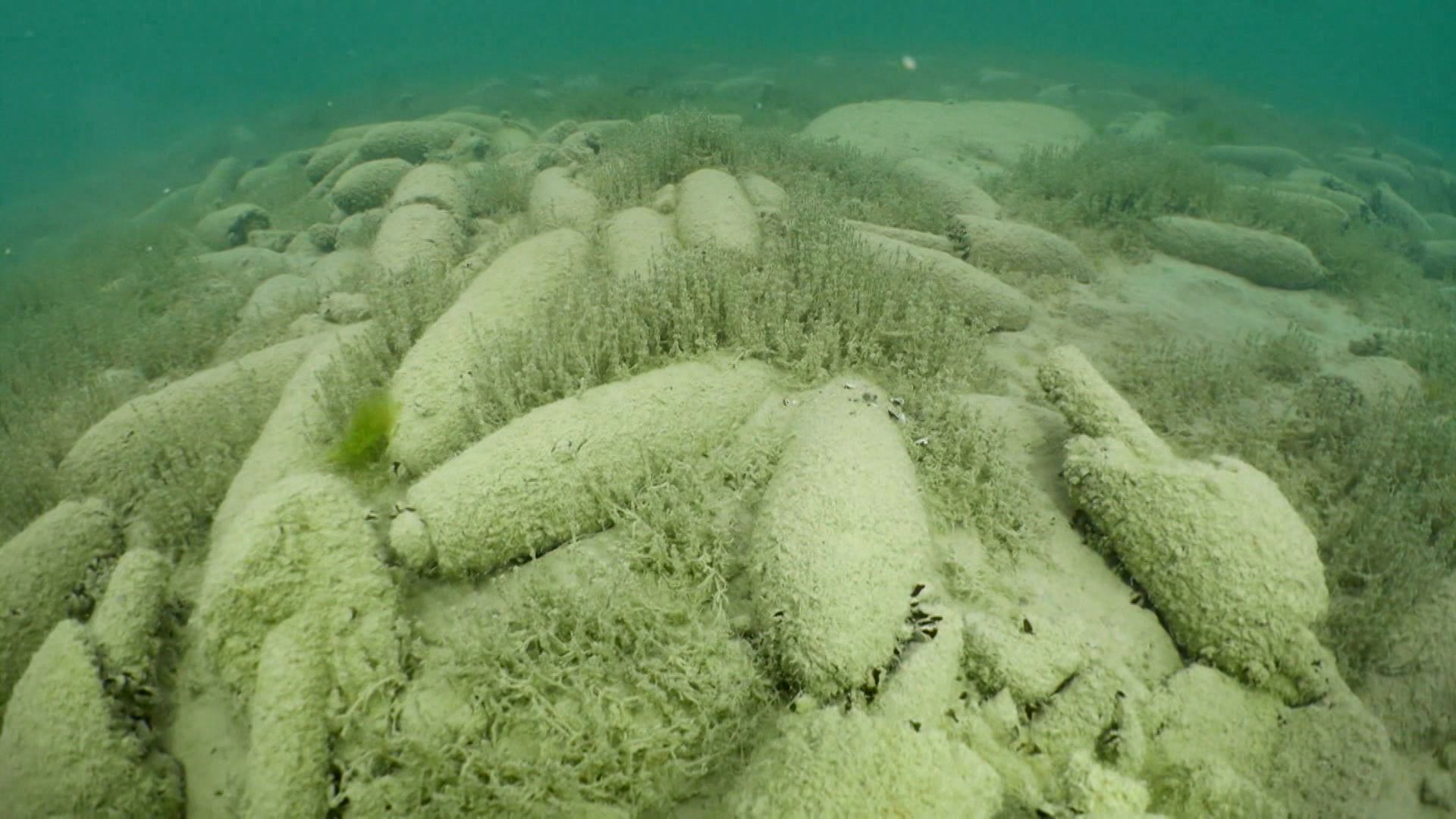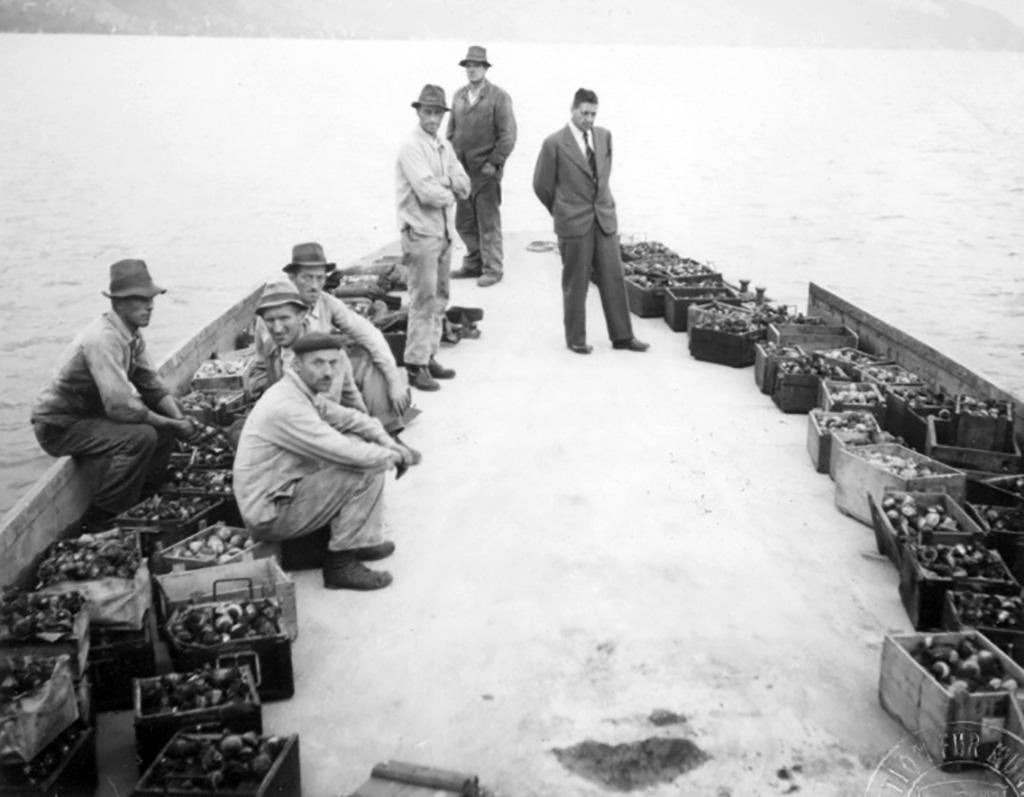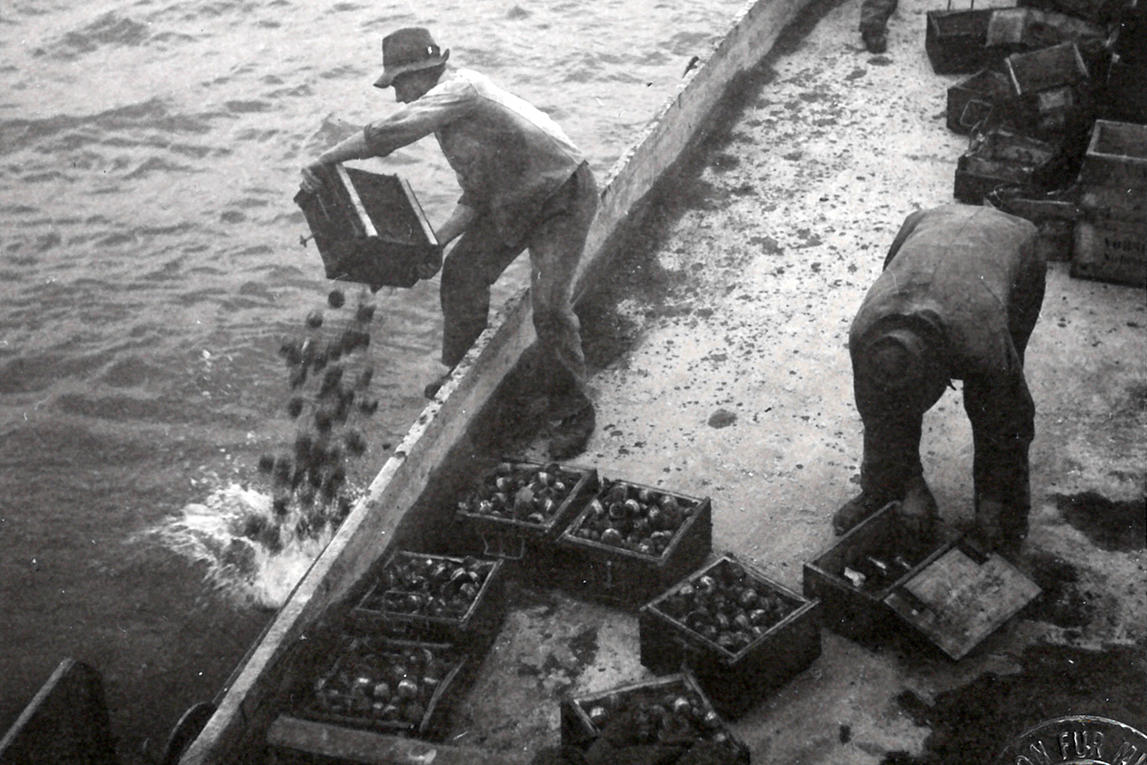
Buried bombs: Swiss army vigilant about lake-dumped munitions

Deep in Switzerland’s Alpine lakes, thousands of tonnes of old ammunition have lain dormant for decades. Authorities play down the risks, but are still looking for ways to fish them back out.
Since 2022, the phrase “Swiss weapons” might make international readers think of the neutral nation’s steadfast refusal to export arms to Ukraine. But the country also has some tricky munitions issues at home. From 1918 to 1964, the army dumped over 12,000 tonnes of unused materiel into various Swiss lakes – notably Thun, Lucerne and Brienz – and decades later, authorities are still stumped about how (or whether) to fish them out again.
This week the Federal Office for Armaments (armasuisse) turned to the public for inspiration. In a “contest of ideas”, it invitedExternal link input for how to “environmentally and safely” remove the munitions, many of which lie at murky depths of up to 220 metres. The contest is open until next February, and the best three ideas – as decided by an expert panel – will share a prize pot of CHF50,000 ($57,780).
What kind of ideas are expected? Probably none of those suggested by some internet users this week, such as “empty the lakes, clean them, then fill them up again” (watson.ch), “blow them all up in the water” (20min.ch) or “give me a diving suit and I’ll get it all out” (pilatustoday.ch).

More
Public asked how to recover dumped munitions in Swiss lakes
Want to read our weekly top stories? Subscribe here.
Rather, inputs are more likely to come from industry or academia – given that the goal is to integrate these fields more closely in the process, as armasuisse wrote. As for expecting revolutionary ideas or slightly adapted current ones, armasuisse spokeswoman Samanta Leiser is tight-lipped: the important thing is their environmental and security aspect, she tells SWI swissinfo.ch.
Techniques already on the table include using “mining magnets, mechanical grabs, and underwater suction cups”, as military authorities wroteExternal link last year. Another option is a “crawler” – what looks like the underwater equivalent of a bomb-disposal robot. A further idea is to use a mobile box that would gather up the munitions along with much of the lake sediment around it.
However, some of this sediment covering the materiel is up to two metres thick. And with scant visibility so deep underwater, the job is tricky. Not to mention the environmental risks associated with swirling up sediment, and the risk of explosion. Finally, where would the thousands of tonnes of munitions be stored after being removed from the lake?

Changing perceptions?
Whether a genius idea is found for such problems remains to be seen. Another question is why authorities are launching the project now, given that risk assessments have long indicated there is nothing to worry about. The most recent defence ministry report from 2020 found no “negative impact of submerged munitions on water quality”. Similar results were noted in 2012 and 2016.
Armasuisse maintains that this remains the case. “The defence ministry is still not planning any salvage operation,” Leiser says. The call for ideas is aimed at having options on the table in case of a future shift of the situation – i.e. if analyses were to unexpectedly show that polluting substances were seeping into the water.
Such unexpected scenarios can crop up. A notable example in Switzerland came in 2020 in the village of Mitholz in canton Bern: due to the risk of munitions buried in a nearby mountain, villagers were told they would have to abandon their homes for around a decade from 2030. The risk had been underestimated for years, the defence ministry said; “full evacuation” was the best solution.

More
Unexploded munitions continue to reverberate in Switzerland
Debates have also picked up since ammunition was found in other lakes. In 2020, it was confirmed that some 4,500 tonnes lay at the bottom of Lake Neuchâtel, thanks to a nearby army shooting range. The previous year in Lake Geneva, divers from French NGO Odysseus31 found four crates of material at a depth of 50 meters, not buried under sediment and thus potentially dangerous.
In 2022 cantonal authorities ruled out any major threat from these munitions, which had been dumped in the lake by a private firm in the 20th century. However, compared with waters in the German-speaking part of Switzerland, the level of knowledge about what exactly lies in Lake Geneva is still patchy, and needs to be further researched, says Elodie Charrière, an environmental historian at the University of Geneva’s Institute for Environmental Sciences.
Generational issue
Charrière, who has written a book External linkabout the munitions dumped in Swiss and French lakes, says she was not surprised by the recent armasuisse call for ideas. After years of regular analysis of the issue by military authorities, it’s “logical” that they now consider how to clear it up, she tells SWI swissinfo.ch – even if this might sound contradictory, given that no concrete salvage operation is planned.
Meanwhile, according to the Swiss contaminated sites ordinanceExternal link, lake munitions disposal sites are classified as permanent waste storage sites, Charrière explains. In fact, the ordinance doesn’t oblige authorities to clean up the lakes as long as they are not deemed contaminated, she says. However, the munitions are there due to a past governmental decision, and for her it’s “reassuring” that the army is – since the early 21st century – engaging with the problem, rather than passing it on to the next generation.
What would her idea be to win the CHF50,000 prize? As an environmental historian, she doesn’t quite have the necessary skills for such a gambit, she says. But as the current methods all present certain drawbacks, she’s happy for the call for ideas to be as public as possible; something innovative could always pop up.
Edited by Balz Rigendinger

In compliance with the JTI standards
More: SWI swissinfo.ch certified by the Journalism Trust Initiative































You can find an overview of ongoing debates with our journalists here . Please join us!
If you want to start a conversation about a topic raised in this article or want to report factual errors, email us at english@swissinfo.ch.